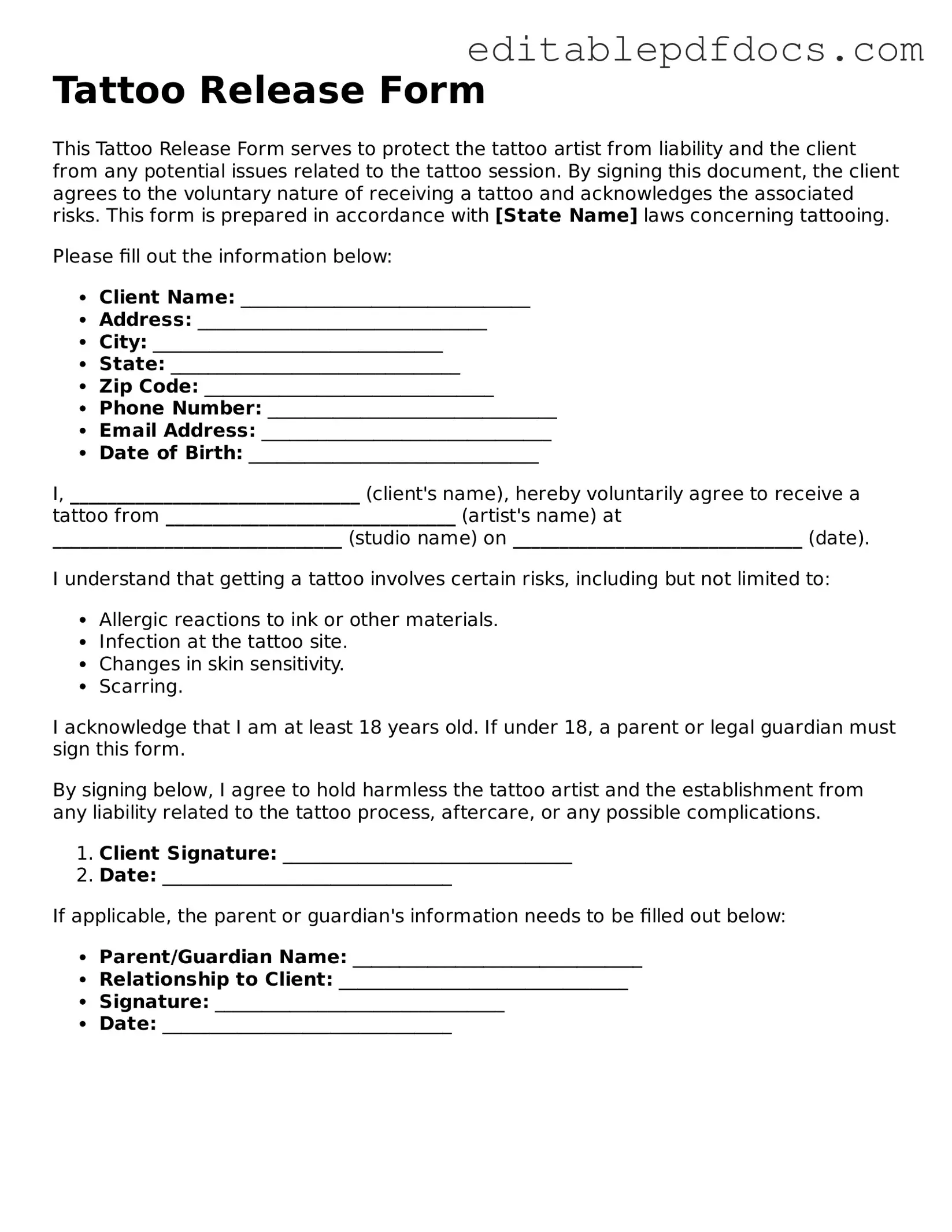When filling out a Tattoo Release form, individuals often make common mistakes that can lead to misunderstandings or complications. One frequent error is failing to provide complete personal information. This includes not listing the full name, contact details, or date of birth. Incomplete information can hinder communication and verification processes.
Another mistake is neglecting to read the entire document before signing. Many people rush through the form, overlooking important clauses that outline the rights and responsibilities of both the artist and the client. This can result in unexpected outcomes later on.
Some individuals mistakenly assume that all sections of the form are optional. Every part of the Tattoo Release form serves a purpose. Omitting required sections can invalidate the release or create legal issues down the line.
Inaccurate descriptions of the tattoo design are also a common issue. Clients may provide vague or unclear descriptions, which can lead to misinterpretation by the artist. Clear communication is essential to ensure that the final design meets expectations.
Another frequent oversight involves the lack of a witness signature. Some forms require a witness to sign, but individuals often forget this step. A witness can provide additional validation to the agreement, and without their signature, the form may not hold up if challenged.
People sometimes overlook the importance of specifying the location of the tattoo on their body. Without this detail, artists may proceed with designs that do not align with the client's vision or preferences. Clarity about placement is crucial for satisfaction.
Additionally, many clients fail to ask questions regarding the form or the tattoo process itself. This lack of inquiry can lead to confusion and dissatisfaction. It is important to seek clarification on any points that are not understood.
Some individuals do not keep a copy of the signed form for their records. Retaining a copy is vital for future reference, especially if any disputes arise. A personal copy can serve as a reminder of the agreed-upon terms.
Lastly, individuals may neglect to date the form upon signing. A date is essential for establishing the timeline of the agreement. Without it, there may be ambiguity regarding when the release was executed.
By being mindful of these common mistakes, individuals can ensure that their Tattoo Release form is filled out accurately and comprehensively. Taking the time to review the document thoroughly can prevent issues and promote a smoother tattoo experience.
